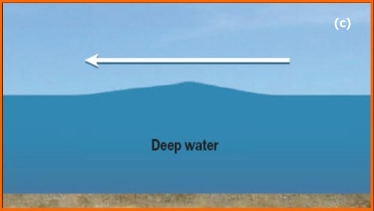The causes
Different kinds of events can produce a tsunami. The least probable, but still possible, cause is the impact of an asteroid or a meteorite in the sea, while the more frequent causes are underwater disturbances: a volcanic collapse, a landslide or an earthquake.
In the case of a tsunami sparked off by an earthquake, the dynamics can be easily illustrated, as shown in Fig. 1. As we know, the land crust is divided into plates (about twenty have been identified, of which six very large ones), which are in continuous movement. The most violent earthquakes occur in areas where the plates collide or converge. (Fig. 2).
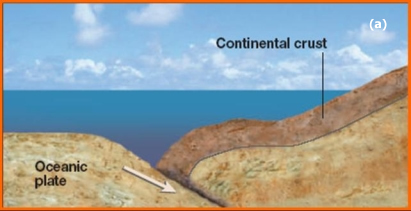 |
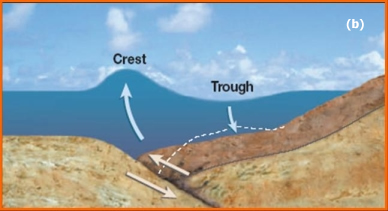 |
|
|
|
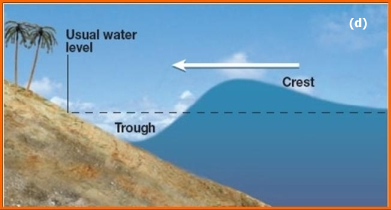 |
Credit: (Nature, vol.433, 27 January 2005)
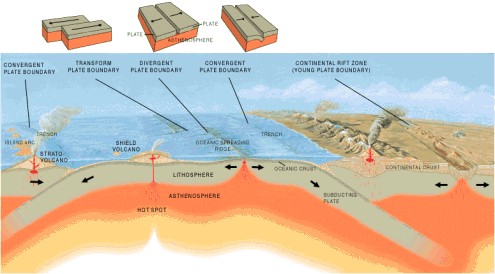 Fig. 2: The boundaries of the plates can be transform, convergent or divergent. In the first case, a horizontal shift predominates and the plates slide up next to each other. In the second case, they move close together and one plate (oceanic) subducts under the one next to it (continental), or the two plates (both continental) collide and corrugate, giving rise to mountain chains. In the third case, the plates move away from each other, as occurs in the oceanic crests, along which there is a continuous reascending of material from the mantle. . (Credit: JADES, S.A.™) |
Fig. 1a shows the subduction of an oceanic plate (Indian Ocean) under a continental plate (Burma), belonging to the great Eurasian plate. The sliding surface is the fault on which the earthquake has its origin. The sliding action of the oceanic plate generates a reaction in the continental plate in the opposite direction. This movement transmits an impulse to the water and creates a "crest" at the point where the crest itself rises, and a trough at the point where it goes down (Fig. 1b). Together, the crest and the trough represent the newly-generated wave of the tsunami. This wave spreads in open sea with a height of only a few tens of centimetres (Fig. 1c) and a long wavelength, while it becomes higher the closer it gets to the coast. (Fig. 1d).
Remember – not all earthquakes cause tsunamis. The fault must be either under or near the sea and cause a vertical shift over a vast area. Earthquakes with a hypocenter that is not very deep (up to 40-50 km) along the subduction areas are responsible for the biggest tsunamis.
The Webweavers: Last modified Tue, 1 Aug 2006 14:48:35 GMT
